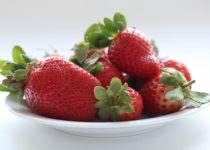Vegetarian Cooking – The Versatility Of Nuts
The little nut… such a necessity for those who are doing vegetarian cooking as a lifestyle or for those thinking of becoming vegetarian. This little friend should be in the diet of any well balanced vegan or vegetarian as they supply such an amazing amount of nutrition which means it should be considered a staple on the daily menu.
Nuts can be used in a variety of ways. On their own as a snack a handful of almonds, for example, can be a rich source of protein and potassium as well as calcium and magnesium for strong bones. Vitamin E (35% of the daily requirement) and also as an antioxidant that helps to fight cancer.

Speaking of the protein in the nuts, something that if you are vegetarian you need to be aware of is that it is necessary to combine the nuts with something else to get “complete” protein, for example, peanut butter on wholemeal bread is perfect.
Even if you are just thinking about becoming vegetarian or you just want to have meatless Mondays including nuts in your daily diet will certainly be of benefit to you.
There are many ways nuts can be incorporated into vegetarian cooking other than just having them as a snack or after meal treat.
Here is just three ways these little nuts prove their versatility.
1. Milk.Nuts make exceptional milk which can be used either on its own or in cooking. To make nut milk -�You will need:
2. Nut Butter.This is really easy
You will need:
3. On Their Own:
Nuts can be added to so many things either whole or chopped the list is really as limited as your imagination. For example, cashews are wonderful in with stir-fried vegetables. A small mixture of nuts sprinkled over a salad makes for a lovely texture as well as taste. And, of course, there is always the addition of nuts to almost any baking of cakes, breads or cookies.
Becoming vegetarian or vegan? Adding nut milks and butters to your vegetarian cooking can be a very rewarding experience – not difficult and a real point of difference to the menu.
Organic nuts – you can use any nut but try one of these first Almonds, Cashews, Brazil nuts, Hazelnuts, Macadamias, Pecans, Pistachios, Walnuts.
A blender is ideal but a food possessor is absolutely fine if you don’t have a blender.
You will need something to strain the milk. There are Nut Milk Bags specifically for this purpose however, you can also use fine muslin or cheese cloth.
How to prepare your nuts?
Nuts are generally preserved by curing however, hard nuts will generally be cured by salting, smoking or air drying. Slice them up as you like and yes, you can eat them raw in salads, along with most other nuts and seeds.
What humidity can I use?
Humidity can figure into your daily humidity needs.
What temperature can I use?
This is one question that gets asked a lot and is also frequently discussed online.
The majority ofDiscussors seem to use 23.5 degree Fahrenheit as the standard temperature, however, further discussion gets into the nuances of frosting with different temperatures.
There are many great resources online for tropical weather. What is a further benefit? We now have a much better idea of how much area we can cover with one frosting.
So, next time someone asks you “If frosting is added to the cake can you call it ganache”, just smile and shake your head no. There is no universal recipe for frosting, however, ganache is a reasonable translation for the popular frenchicing term.
Ganache is the velvety warm chocolatey taste that adds to the end results of your project.
This is frosting that is primarily used in melting chocolate. However, it can be used with other fats and even fruits such as chocolate, whipped cream, cream cheese, lemon, strawberry, tonka, chocolate hazelnut and don’t forget black chocolate and the American sweet corn.
Rice, cornipes, couscous, fed desserts, groundnut and sambar are all examples of ganache.
Ganache is fairly high in fat content and it’s easy to use compared to butter cream. I’ve heard there are three rules to using ganache. They are using crushed ice, not too much of it, and it must be heated.
This is generally accomplished in the form of rectangular cakes, of course, and they’re generally classified as dessert. However, they also combine well with savory fillings and go with any kind of meat, seafood, fowl and even vegetables.
I’ve found a mixture ofUsed to be sold in tins or jars also.



